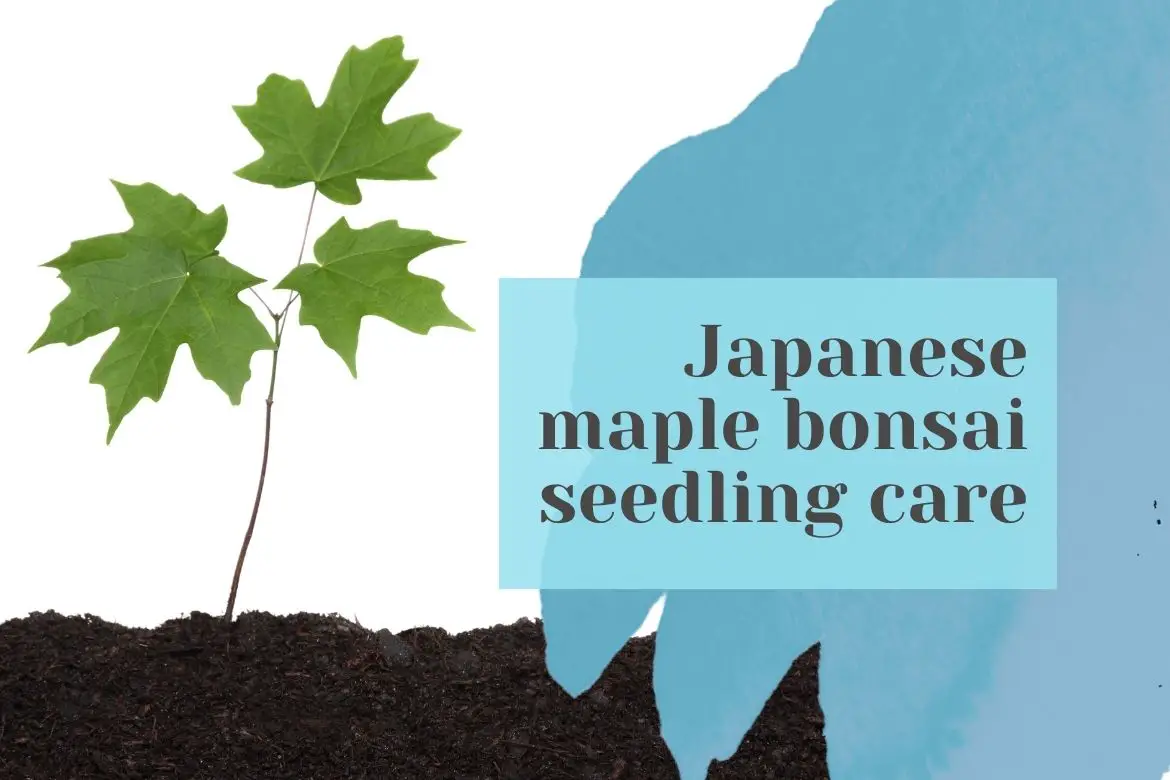You can grow Japanese maple seedlings from seeds or cuttings. However, if you are lucky enough, you will find Japanese maple seedlings growing under a tree as well. You can collect these seedlings and plant them in pots. Nevertheless, remember that these seedlings have grown from seeds and growing Japanese maple from seeds doesn’t not produce true copies of the mother plant. For growing true copies of the mother plant, you will have to grow Japanese maple using cuttings or the grafting method.
Here are some tips for Japanese maple bonsai seedling care:
- Potting: If too many seeds or cuttings grow in the same pot, move some cuttings to a different pot or individual pots (this will prevent seedlings from competing with each other). I would recommend transferring these seedlings to their individual pots as they will spend many years in that pot before they are ready to be trained as Japanese maple bonsai. You can also use a seedling bed to grow multiple seedlings in the same soil. Generally, in 3-5 years the Japanese maple seedling trunk will be thick enough for a small bonsai tree.
- Sunlight: Protect the seedlings from the harsh summer sun. In their natural habitat, these trees are generally protected by large trees around them. However, when grown in a pot, without sun protection, their leaves will scorch. You can use a shade cloth over the seedlings.
- Watering: Water the seedlings regularly, keeping the soil moist but not waterlogged. Make sure you water your Japanese maple seedling everyday in summer. In the colder months however, you can water the seedlings every other day.
- Soil: Use well-draining soil that is rich in organic matter (slightly acidic pH 5.5-6.5). Avoid using soil that is too heavy or compacted as it can impede root growth. Using a highly nutritious soil will also eliminate the need of fertilization in the initial year. However, I recommend application of good amount of fertilizer as spring arrives. This will help in trunk thickening.
- Pest and diseases: If you have kept the seedling pot or seedling bed on the ground, the seedlings are more likely to be attacked by snails and slugs. They will feed on the stems and foliage of the plant. To prevent this, you keep the pot/seedlings beds on a raised position from the ground. Although these seedlings are quite resistant to pests, sometimes there can be an infestation of aphids or spider mites. Hence keep monitoring the plants and remove any seedling from other plants to prevent the spread of the pests and diseases. Continue reading about bonsai pests and diseases and their treatment.
Japanese maple bonsai seedling winter care
There are a few things you need to take care of while caring for your Japanese maple seedling:
- Positioning: Keep them in an unheated greenhouse or shelter in the winter. For thickening the trunk of the seedling, apply a good amount of fertilizer when spring begins.
- Cleaning the soil surface: Whether you are growing the seedlings in a pot or a bed, perform regular cleaning of the soil surface (in particular during winter and spring). Remove plant leaves and dead debris and check for pests. Use a bonsai brush and a chopstick to clean the soil surface. Read more about bonsai tools and their use.
- Pruning the seedling: 1-2 year old seedlings are strong enough to tolerate pruning and defoliation. Perform some light pruning of the some unwanted shoots if needed. For 1-2 year old seedlings, you can cut the trunk back to control their growth (especially the vigorously growing seedlings). Cut them back to almost 12 inches (30 cm). If you are not satisfied with the movement of the trunk, prune the trunk at the appropriate place to grow a new leader. This will help in shaping the trunk (creating interesting movement) in the very early stages of the plant’s life. If your climate is too cold in winter, you can perform pruning in late winter.
- Defoliation: Completely defoliate the seedling in winter. You can also fully defoliate these seedlings in spring to save some energy.
- Remove wires: If you have applied any wires on the seedlings, remove them in winter. Don’t apply the wires too tight at the time of wiring. Loose wiring should be good enough to give the desired movement to the trunk.
Continue reading about Japanese maple bonsai care and types of Japanese maple for bonsai.

